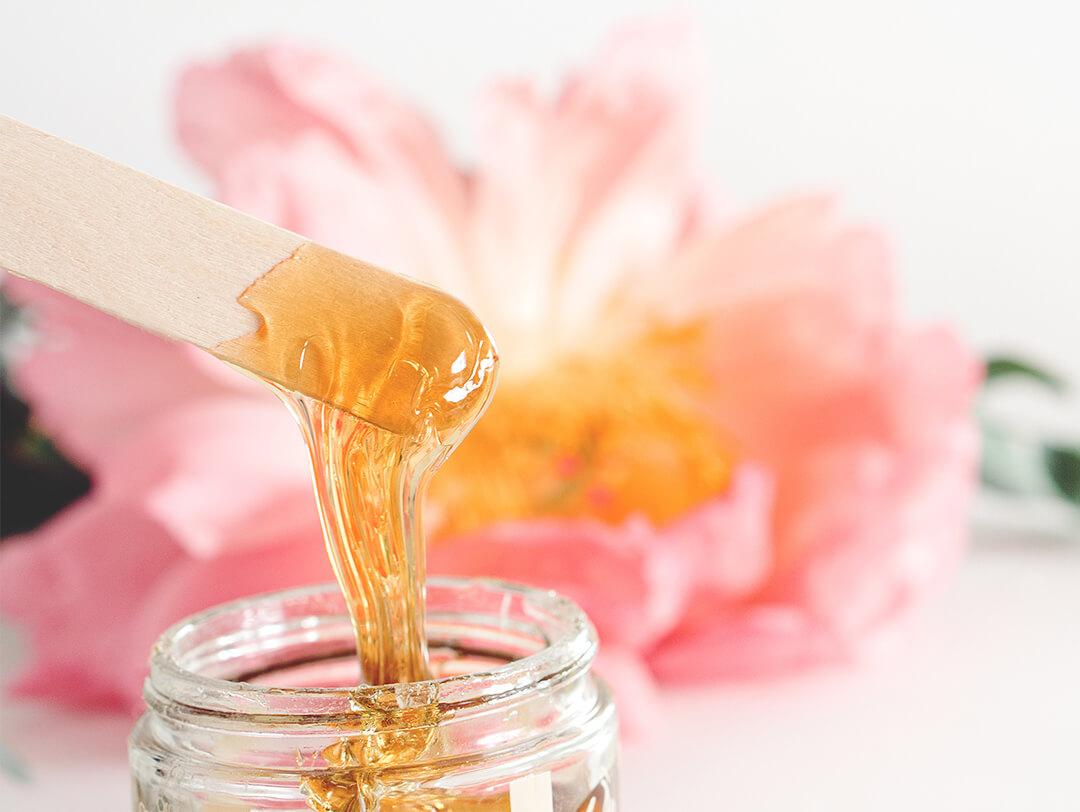Everything You Need to Know About Sugaring Hair Removal



Cortney Clift


For decades, hair removal has really been about choosing the lesser of many evils. While effective, waxing can be a painful and expensive way to remove body hair. Shaving, on the other hand, is affordable but requires the most maintenance. It also frequently leads to ingrown hairs. Laser hair removal is great but can cost a fortune. Thankfully, sugaring, another hair removal technique, is beginning to rise in popularity and might just be the best option out there.
This hair removal method is a natural, less painful way to get rid of unwanted hair that lasts just as long as traditional waxing. To find out more about what exactly sugaring is, how it’s different than waxing, and what you can expect to happen during an appointment, we tapped Elizabeth Markoff, an esthetician and the owner of Rockridge Day Spa in Oakland, California.


It's about glam time you treated yourself.
First, what is sugaring?
“Sugaring is a natural and more sustainable method of hair removal,” Markoff explains. “It uses only sugar, lemon juice, and water to create a gentle and sticky sugar paste. This adheres to dead skin cells to remove hair from the root with an easy flick of the wrist.”
While this body hair removal method is only beginning to break into the mainstream skincare industry, it is by no means new. In fact, it actually dates all the way back to 1900 BC when it was frequently used throughout Persia.
"The biggest advantage of sugaring over waxing is that the hair is removed in the same direction of growth rather than against it" Markoff explains. "This helps control ingrown hairs. Plus, it's completely natural so it's much better for the environment." The sugaring paste is also hypoallergenic, meaning it's a great, gentle option for everyone, but especially those with sensitive skin.
What’s the difference between sugaring and waxing?
"Wax usually uses resins and polymers which do not break down and stick to the skin," Markoff explains. This commonly results in over-exfoliation and even lifting (when a layer of skin is ripped away with wax).
Sugaring, however, warms up with the body temperature to create an ideal consistency. "At Rockridge Day Spa, we use organic sugar and biodegradable gloves, which allow us to compost our trash. Waxing uses sticks and stips and produces a lot more waste."
Does a sugaring treatment hurt?
"The application of the sugar is slow and comforting," Markoff says. Some of her clients even say it feels like a massage. "Because sugar is removed in the same direction of the hair growth, the hair gently glides out of the follicle. This technique only removes dead skin cells and not live skin cells, which means the pain level is much less than waxing."
Markoff admits that you can certainly still feel that hair is being removed, but it’s much more comfortable and tolerable. "It’s much less irritating to the hair follicle and causes less trauma to the skin," she says. Take note that if you're sugaring your bikini area, it's likely to hurt more if you're pregnant or on your period. It will also hurt more if you shave in between sessions.
What can I expect during a sugaring session?
Below, Markoff explains what you can expect to happen during the sugaring process, from start to finish.
1. Exfoliate your skin prior to your appointment.
While Markoff does not exfoliate the skin during a sugaring appointment, she does recommend gently exfoliating the area you're planning to sugar a few days before coming in. This will help to bring any ingrown hairs to the skin's surface so that they can be removed.
2. Your skin will be prepped.
"We always begin a sugaring appointment by warming the sugar to room temperature for easy application," Markoff says. "We also prep the skin with a pre-cleanse product that removes oils and any other product from the area you're sugaring. Next, we apply arrowroot powder to absorb any oils left and then dry the skin."
3. A sugar paste is applied to your skin.
"Using a gloved hand, I grab a little ball of sugar paste that I keep at my fingertips," Markoff says. "This ball of sugar is the only sugar I will use for the entire service. I can use and reuse this ball of sugar for the entire area of hair removal. For example, one ball of sugar will be used for an entire leg." Next, Markoff presses the sugar paste onto the skin in the opposite direction of hair growth, making sure that the sugar paste has melted around the hair follicle.
4. They will gently remove your hair with the sugar paste.
Once she sees that the paste is securely attached to the hair, she gently flicks her wrist in the same direction as the hair growth, lifting the hair out of the follicle and into the sugar paste. "I continue to follow this same step over and over until all the hair is removed," she says.
5. The area is cleaned and treated.
Because sugar is water-soluble, any sugaring paste left behind can be easily removed with water. Once cleaned, the skin should feel soft and supple. Finally, she applies tea tree oil to soothe the skin and prevent any irritation from occurring.
"The beautiful thing about sugaring is that it can grab the hair at 1/16 of an inch, whereas waxing can only grab hair that is about 1/8 inch long," Markoff says. "So sugaring can be particularly great in those summer months. Now there is no need to go around with a stubbly bikini line for too long if you don't want to."
Want in on all the Glam Bag fun? Take our Beauty Quiz now to get started. And don’t forget to check us out on Instagram and Twitter @IPSY.
Liked this post? Share!
Related Stories


Skin
How to Adjust Your Skincare Routine for Mature Skin in the Winter
Published on Dec 4, 2025 • 7 min read


Skin
Meet the Best Moisturizers for Winter, According to Dermatologists
Published on Dec 1, 2025 • 9 min read


Skin
What Is Inflammaging—and Why Everyone’s Talking About It
Published on Dec 1, 2025 • 8 min read


Skin
6 Skincare Trends to Have on Your Radar in 2026, According to Experts
Published on Dec 1, 2025 • 7 min read


Skin
We Grabbed Our Crystal Ball and Found These 6 Skincare Predictions for 2025
Published on Dec 10, 2024 • 7 min read


Skin
Simple Self-Care Tips That Actually Make a Difference
Published on Nov 13, 2025 • 12 min read


Skin
These 9 Face Scrubs Will Unlock Soft and Smooth Skin on Contact
Published on Nov 5, 2025 • 10 min read


Skin
10 Thanksgiving Foods That Will Have Your Skin Coming Back for Seconds
Published on Oct 15, 2025 • 7 min read


Beauty Picked Just for You
Get 5 products worth up to $70
Plus exclusive access to epic deals up to 80% off
Starting at just $14/month. Cancel anytime.